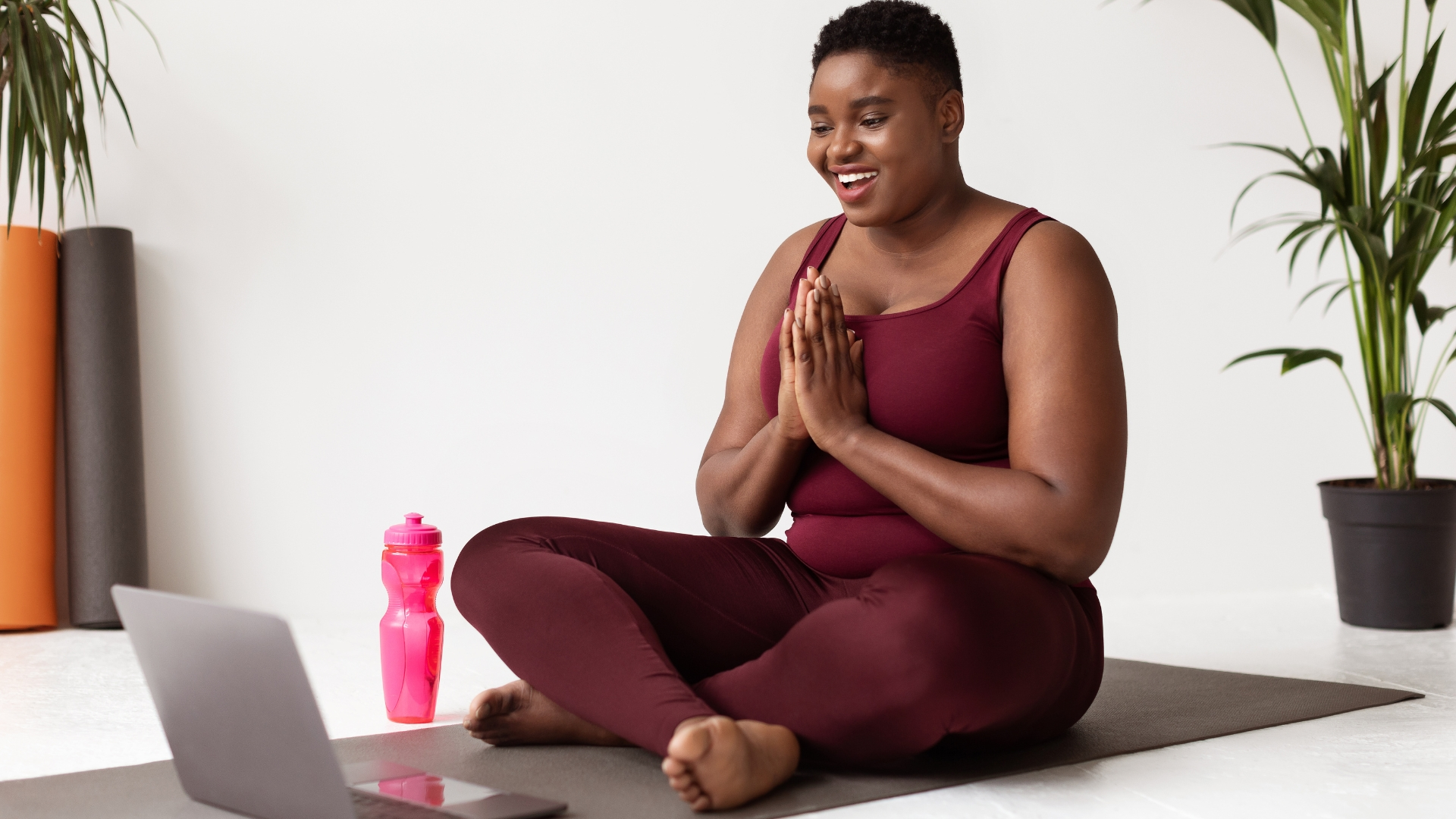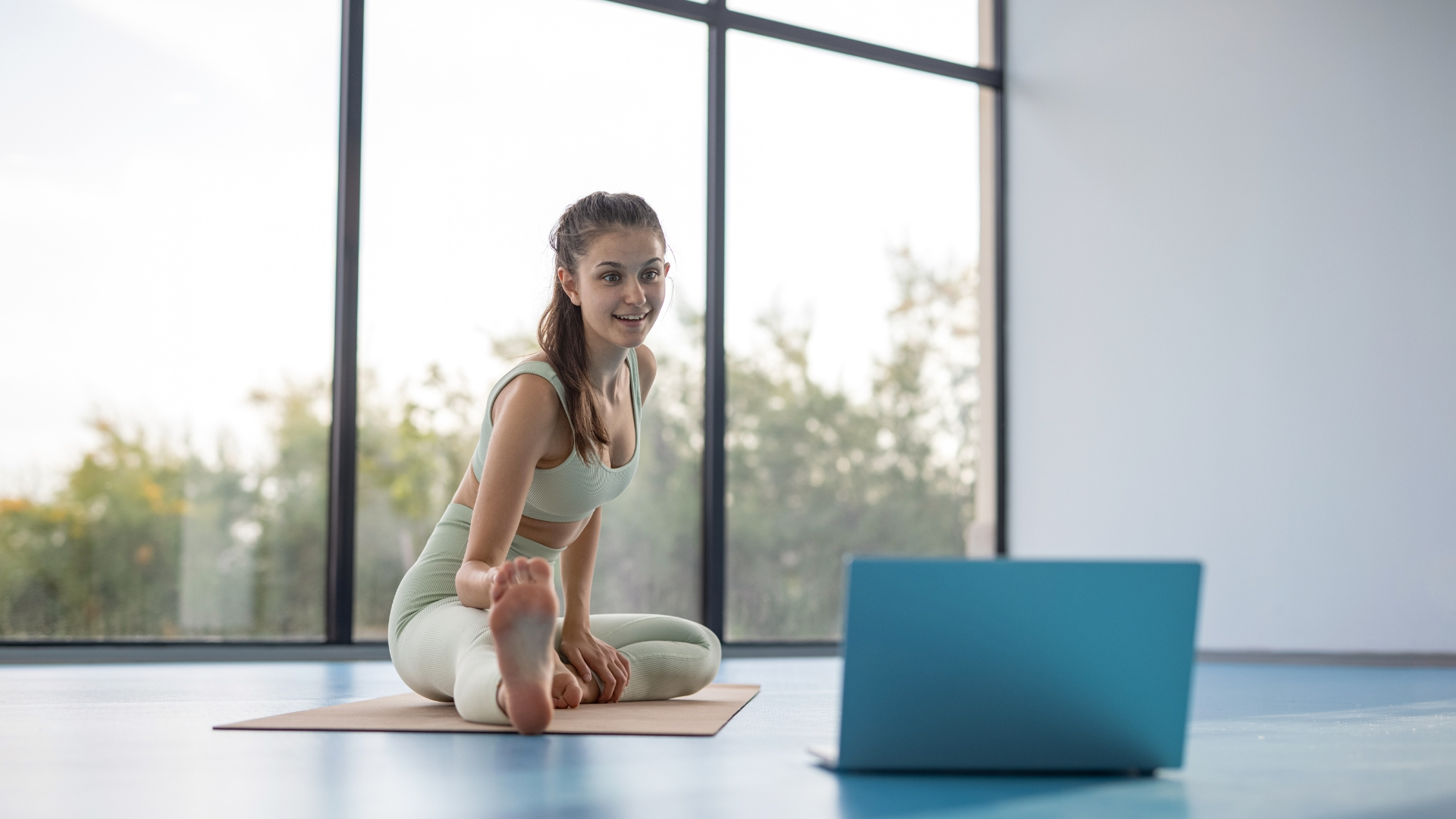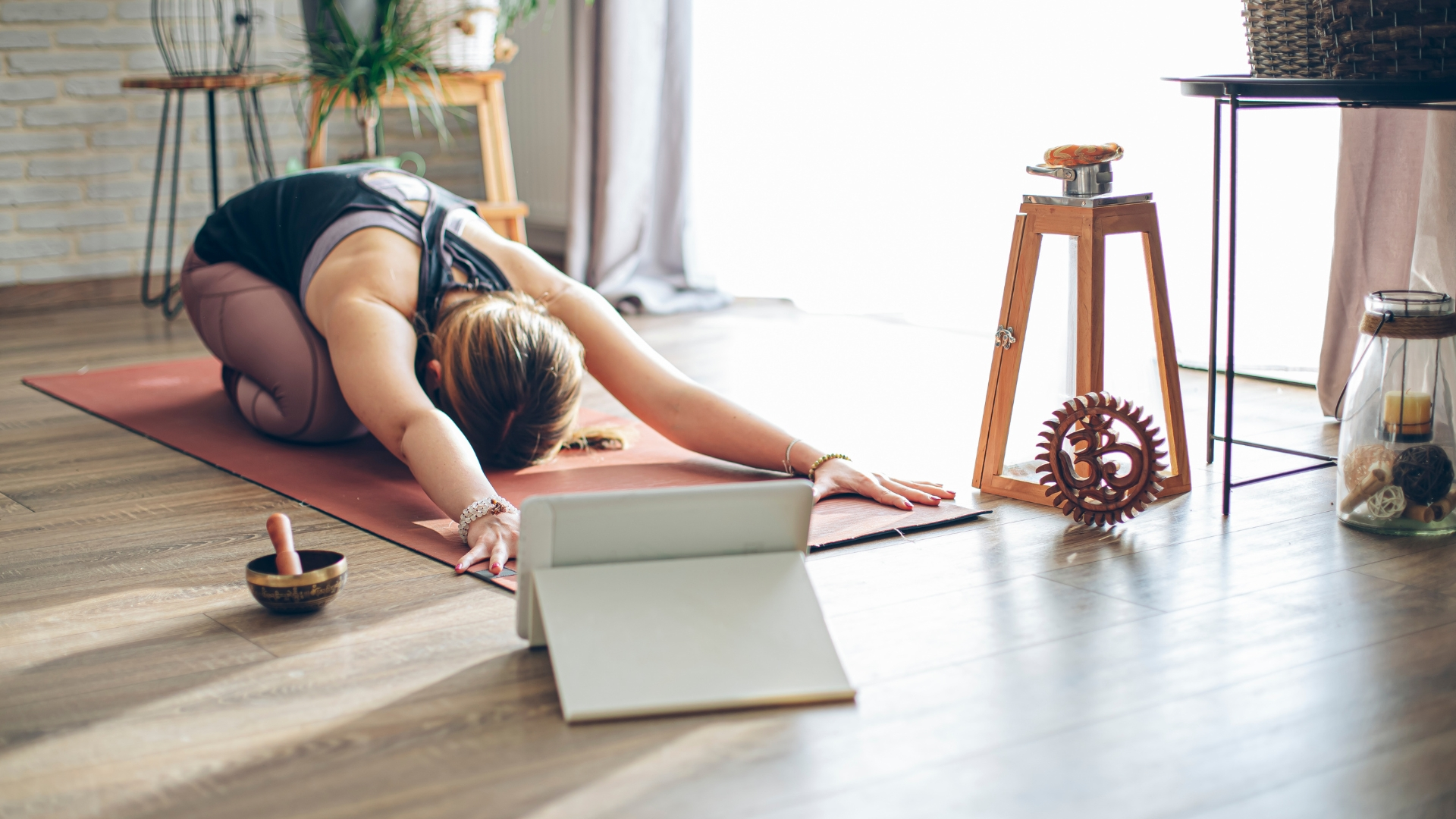Can Yoga Help With Stress?
In today’s fast-paced world, stress has become a ubiquitous part of life. From work pressures to personal responsibilities, the sources of stress are endless. According to the report, 77% of Indians often feel at least one symptom of stress. Amidst this chaos, many people are turning to ancient practices for relief, and yoga has emerged as a popular and effective tool for managing stress. This blog delves into how yoga can help alleviate stress, exploring its physical, mental, and emotional benefits, as well as offering practical advice for incorporating yoga into your daily routine.
Understanding Stress
Before diving into how online yoga classes help with stress, it’s important to understand what stress is. Stress is a natural response to perceived threats or challenges, triggering a cascade of physiological reactions known as the “fight or flight” response. This response increases heart rate, blood pressure, and the release of stress hormones like cortisol and adrenaline. While this response can be useful in short bursts, chronic stress can lead to a host of health problems, including anxiety, depression, cardiovascular diseases, and a weakened immune system.
The Science of Yoga
Yoga is an ancient practice that originated in India over 5,000 years ago. It combines physical postures (asanas), breathing techniques (pranayama), meditation, and ethical principles to promote holistic well-being. The word “yoga” comes from the Sanskrit root “yuj,” meaning to unite or integrate, reflecting the practice’s aim to harmonize the body, mind, and spirit.
Modern scientific research has provided evidence supporting the benefits of yoga for stress reduction. Studies have shown that regular yoga practice can reduce cortisol levels, lower blood pressure, improve heart rate variability, and enhance overall psychological well-being. Yoga engages the parasympathetic nervous system, promoting a state of calm and relaxation that counteracts the body’s stress response.
Physical Benefits of Yoga for Stress Relief
-
Reduces Muscle Tension
Stress often manifests as physical tension in the body, leading to aches and pains. Yoga postures help stretch and relax muscles, releasing built-up tension. Poses like Child’s Pose (Balasana), Downward-Facing Dog (Adho Mukha Svanasana), and Forward Fold (Uttanasana) are particularly effective for relieving stress-related muscle tightness. By engaging in these poses, individuals can release the tension that accumulates in areas such as the neck, shoulders, and back, which are common stress storage points.
-
Improves Flexibility and Strength
Regular yoga practice enhances flexibility and builds strength, contributing to overall physical health. This can reduce the likelihood of injuries and improve posture, which in turn can alleviate stress-related discomfort and tension. Improved flexibility allows for greater freedom of movement, reducing physical strain during daily activities and promoting a sense of physical well-being.
-
Enhances Respiration and Circulation
Yoga promotes deep, mindful breathing, which increases oxygen flow to the brain and other vital organs. Improved circulation helps reduce physical symptoms of stress, such as headaches and fatigue, and enhances the body’s natural healing processes. Breathing exercises, such as diaphragmatic breathing, also stimulate the parasympathetic nervous system, encouraging relaxation and reducing the physiological impacts of stress.
Mental and Emotional Benefits of Yoga for Stress Relief

-
Promotes Mindfulness
One of the core components of yoga is mindfulness—the practice of being fully present in the moment. Mindfulness helps break the cycle of stress by shifting focus away from worries about the past or future. Techniques like mindful breathing and meditation cultivate a sense of calm and clarity. Practicing mindfulness through yoga encourages individuals to tune into their body and breath, fostering a deeper awareness of their physical and emotional state.
-
Reduces Anxiety and Depression
Research indicates that online yoga classes for stress relief can significantly reduce symptoms of anxiety and depression. The combination of physical activity, controlled breathing, and meditation boosts the production of serotonin and endorphins—neurotransmitters that enhance mood and promote a sense of well-being. Yoga’s focus on self-acceptance and non-judgmental awareness also helps individuals cultivate a more positive relationship with themselves, reducing self-criticism and enhancing emotional resilience.
-
Enhances Emotional Regulation
Regular yoga practice helps improve emotional resilience and self-regulation. By learning to stay present and centered, individuals can better manage emotional reactions to stressors, reducing the impact of stress on mental health. Techniques such as breath awareness and meditation foster a greater capacity to observe and respond to emotions without being overwhelmed, leading to more balanced and thoughtful responses to stress.
-
Encourages Relaxation
Yoga’s emphasis on relaxation techniques, such as Savasana (Corpse Pose) and Yoga Nidra (Yogic Sleep), activates the parasympathetic nervous system, which counteracts the stress response. This helps the body and mind enter a state of deep relaxation and restoration. These practices create an opportunity for individuals to fully let go of tension and stress, promoting a profound sense of peace and calm.
Yoga Practices for Stress Relief
Physical Postures (Asanas)
- Child’s Pose (Balasana): A gentle resting pose that promotes relaxation and stretches the back.
- Downward-Facing Dog (Adho Mukha Svanasana): An inversion that calms the mind, stretches the spine, and relieves tension in the shoulders and hamstrings.
- Forward Fold (Uttanasana): A pose that releases tension in the neck and back while promoting relaxation.
- Legs-Up-the-Wall Pose (Viparita Karani): A restorative inversion that soothes the nervous system and reduces stress.
Breathing Techniques (Pranayama)
- Nadi Shodhana (Alternate Nostril Breathing): Balances the nervous system and calms the mind.
- Ujjayi (Ocean Breath): Increases oxygen intake and promotes relaxation.
- Diaphragmatic Breathing: Encourages deep, full breaths that activate the parasympathetic nervous system.
Meditation and Mindfulness
- Mindful Breathing: Focuses attention on the breath, fostering a sense of presence and calm.
- Body Scan Meditation: Encourages awareness of physical sensations and the release of tension.
- Loving-Kindness Meditation: Cultivates compassion and reduces negative emotions.
Practical Tips for Incorporating Yoga into Your Life

-
Start with Simple Poses
If you’re new to yoga, begin with basic poses that are easy to learn and practice at home. Poses like Mountain Pose (Tadasana), Cat-Cow Pose (Marjaryasana-Bitilasana), and Bridge Pose (Setu Bandhasana) are excellent for beginners. These poses provide a solid foundation for developing strength, flexibility, and body awareness.
To know about advanced yoga poses, check out our blog “What Are Some Advanced Yoga Poses?”
-
Focus on Breathing
Incorporate pranayama, or breath control exercises, into your practice. Techniques like Nadi Shodhana (Alternate Nostril Breathing) and Ujjayi (Ocean Breath) are effective for calming the mind and reducing stress. Spend a few minutes each day practicing deep, mindful breathing to cultivate a sense of relaxation and presence.
-
Set Aside Regular Time
Consistency is key to reaping the benefits of yoga. Dedicate a specific time each day for your practice, even if it’s just 10-15 minutes. Over time, you can gradually increase the duration of your sessions. Establishing a regular practice helps create a routine that supports your well-being and reduces stress.
-
Create a Peaceful Environment
Find a quiet, comfortable space for your practice. Use props like a yoga mat, cushions, and blankets to support your poses and enhance comfort. Soft lighting and soothing music can also create a relaxing atmosphere. Creating a dedicated space for yoga encourages a sense of ritual and mindfulness, enhancing the overall experience.
-
Join a Class or Follow Online Videos
If you’re unsure where to start, consider joining a yoga class or following online tutorials. Classes led by experienced instructors provide guidance and motivation, while online resources offer flexibility to practice at your own pace. Many platforms offer classes specifically designed for stress relief, helping you find the right practice for your needs.
-
Listen to Your Body
Yoga is a personal journey, and it’s important to listen to your body and practice at your own pace. Avoid pushing yourself into uncomfortable poses, and modify poses as needed to suit your level of flexibility and strength. Paying attention to your body’s signals helps prevent injury and ensures a safe, effective practice.
The Broader Impact of Yoga on Stress Reduction
Community and Support
Yoga often fosters a sense of community and support. Practicing yoga in a group setting can create a shared experience of mindfulness and relaxation. This sense of belonging and connection can be particularly beneficial for individuals experiencing stress, providing emotional support and reducing feelings of isolation.
Holistic Approach to Well-Being
Yoga’s holistic approach addresses multiple aspects of well-being, including physical health, mental clarity, and emotional balance. This comprehensive approach makes yoga a powerful tool for stress management. By integrating movement, breath, and mindfulness, yoga promotes overall harmony and resilience, enhancing the body’s ability to cope with stress.
Long-Term Benefits
The benefits of yoga extend beyond immediate stress relief. Regular practice can lead to long-term improvements in overall health and well-being. Studies have shown that yoga can improve cardiovascular health, boost immune function, and enhance cognitive performance. These long-term benefits contribute to a greater capacity to manage stress and maintain a balanced, healthy lifestyle.
Conclusion
In a world where stress is often unavoidable, finding effective ways to manage it is crucial for maintaining overall well-being. Yoga offers a holistic approach to stress relief, addressing the physical, mental, and emotional aspects of stress. By incorporating yoga into your daily routine, you can cultivate a greater sense of balance, resilience, and inner peace.
The benefits of yoga extend beyond the mat, influencing various aspects of life. As you become more attuned to your body and mind through yoga, you’ll likely find that you’re better equipped to handle stressors with grace and calm. Whether you’re seeking to reduce anxiety, improve physical health, or simply find a moment of peace in a hectic day, yoga provides a versatile and accessible solution.
So, roll out your mat, take a deep breath, and embark on a journey towards a stress-free life with yoga. Your mind, body, and spirit will thank you. The path to a calmer, more centered self awaits, one breath at a time.
Inquiry
If you have any questions, please feel free to reach out. We’ll be glad to help!


